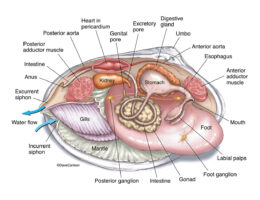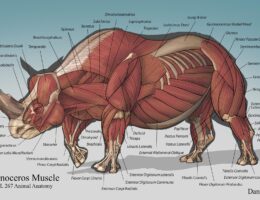Skip to content
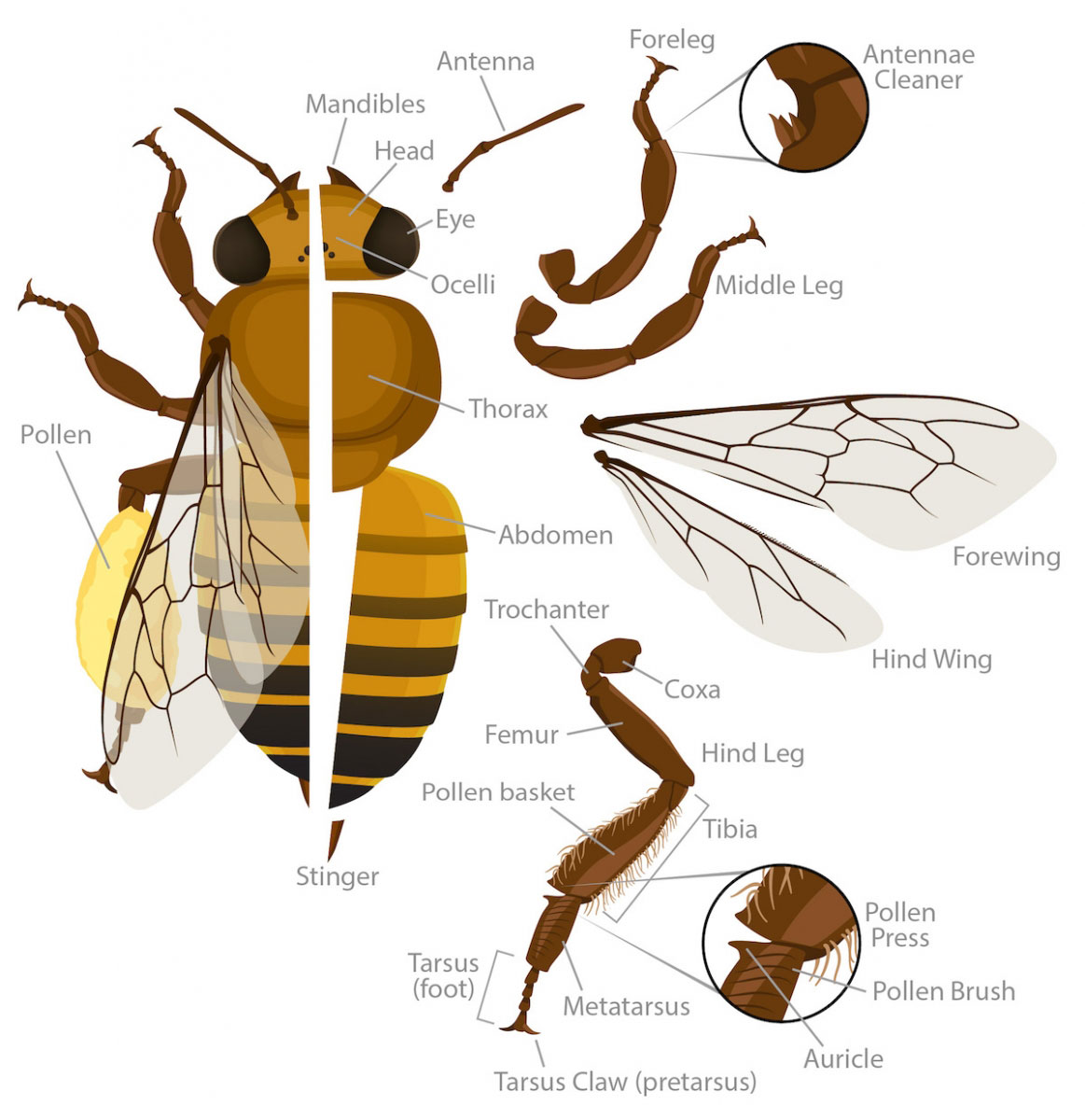
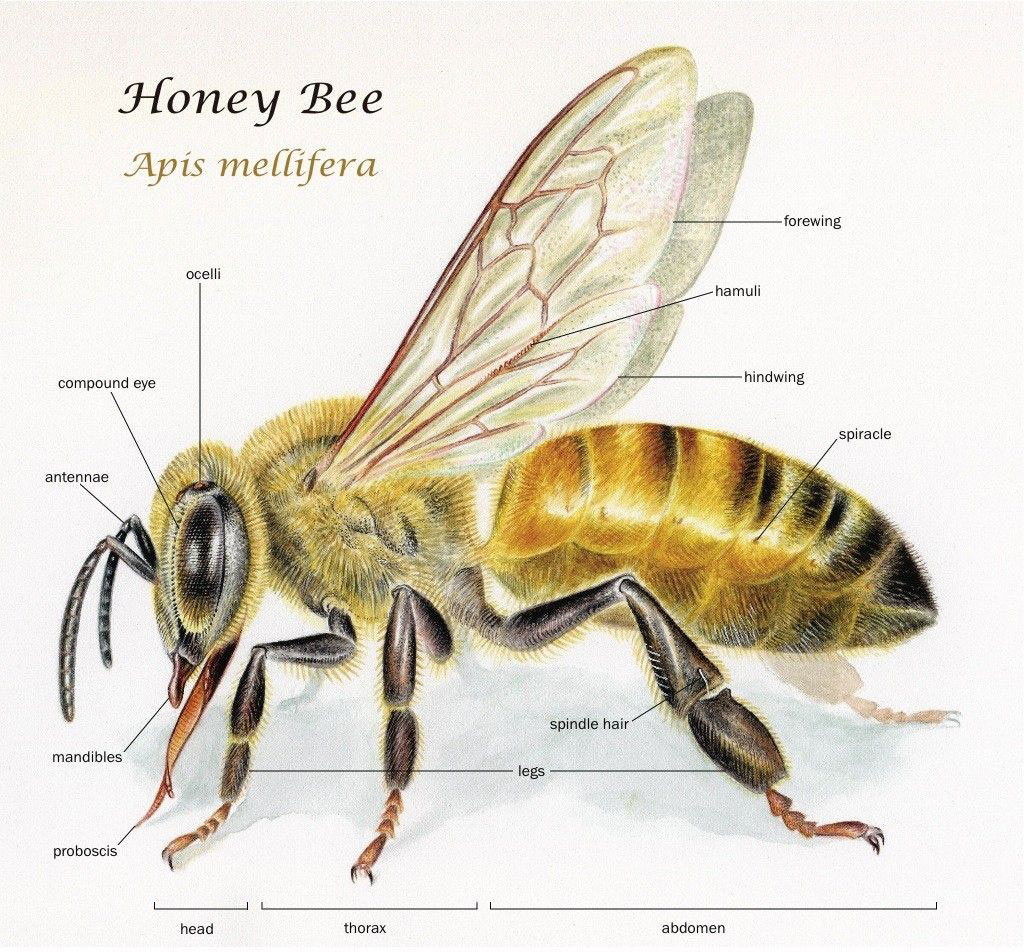
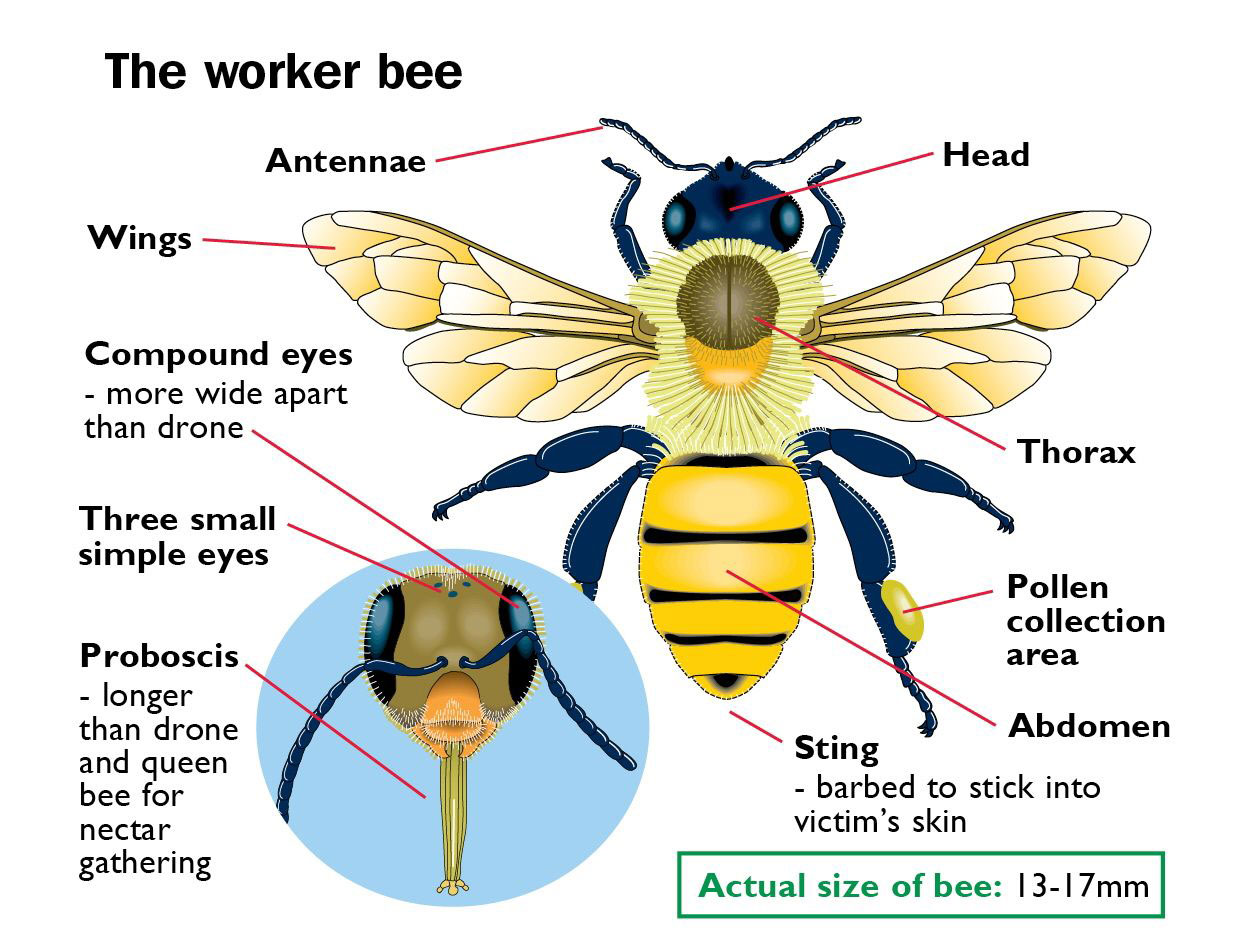
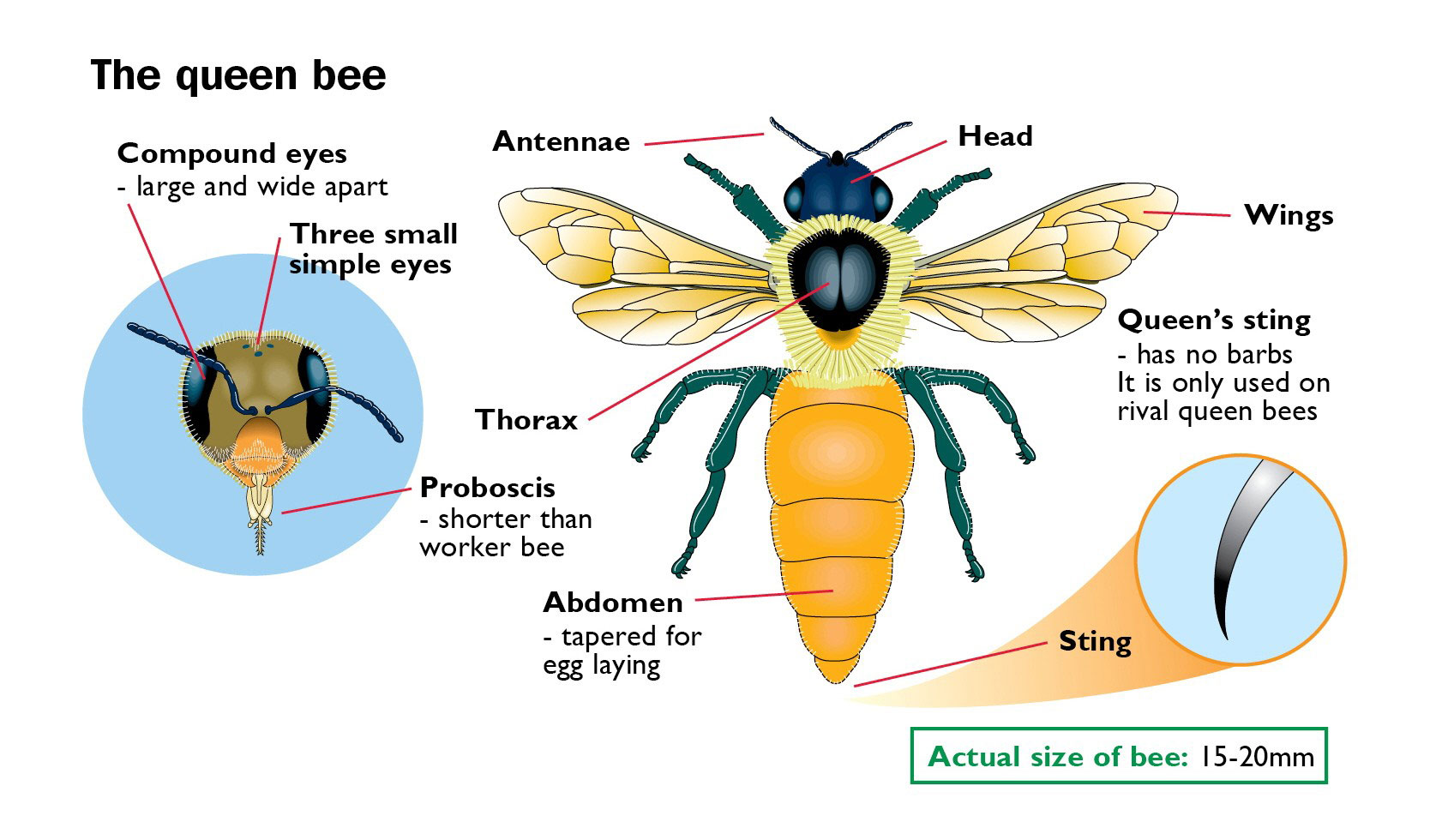
- Head: The head of the bee contains its eyes, antennae, and mouthparts. The eyes are large and compound, allowing the bee to see in many directions at once. The antennae are used for sensing the environment, and the mouthparts are used for feeding.
- Thorax: The thorax is the middle section of the bee’s body, and it contains the bee’s wings and legs. The wings are attached to the thorax and allow the bee to fly, while the legs are used for walking and for gathering pollen.
- Abdomen: The abdomen is the rear section of the bee’s body, and it contains the bee’s digestive and reproductive organs. The digestive system includes the stomach and intestines, which are used to break down and process food. The reproductive system includes the ovaries and stinger (in females) or the testes (in males).
- Wings: Bees have two pairs of wings that are attached to the thorax. The wings are thin and translucent, and they are covered in tiny scales that help to give the bee lift when it flies.
- Legs: Bees have three pairs of legs that are attached to the thorax. The legs are covered in small hairs that help the bee to collect pollen, and they are also equipped with sharp claws that allow the bee to grip onto surfaces.
- Stinger: Female bees have a stinger that is located at the end of their abdomen. The stinger is used for self-defense and for protecting the hive. When a bee stings, it releases venom that can cause pain, swelling, and other symptoms.
- Antennae: Bees have two antennae that are located on their head. The antennae are used for sensing the environment and for communicating with other bees.
- Eyes: Bees have two large compound eyes that are located on their head. The eyes are made up of many small lenses, which give the bee a wide field of vision and allow it to see in many directions at once.
- Proboscis: The proboscis is a long, tube-like mouthpart that is used by the bee for feeding. The bee uses its proboscis to suck nectar from flowers, which it then stores in its stomach.
You may also like these posts




